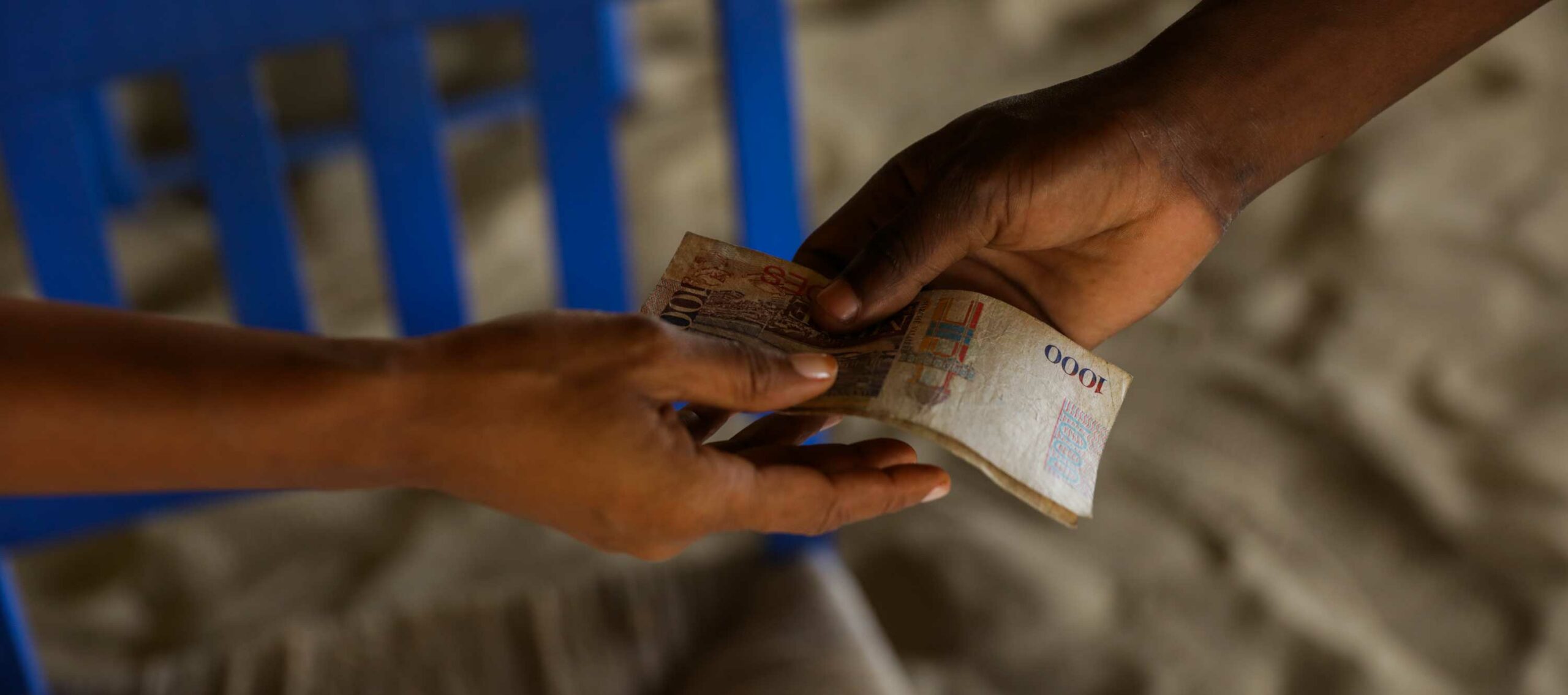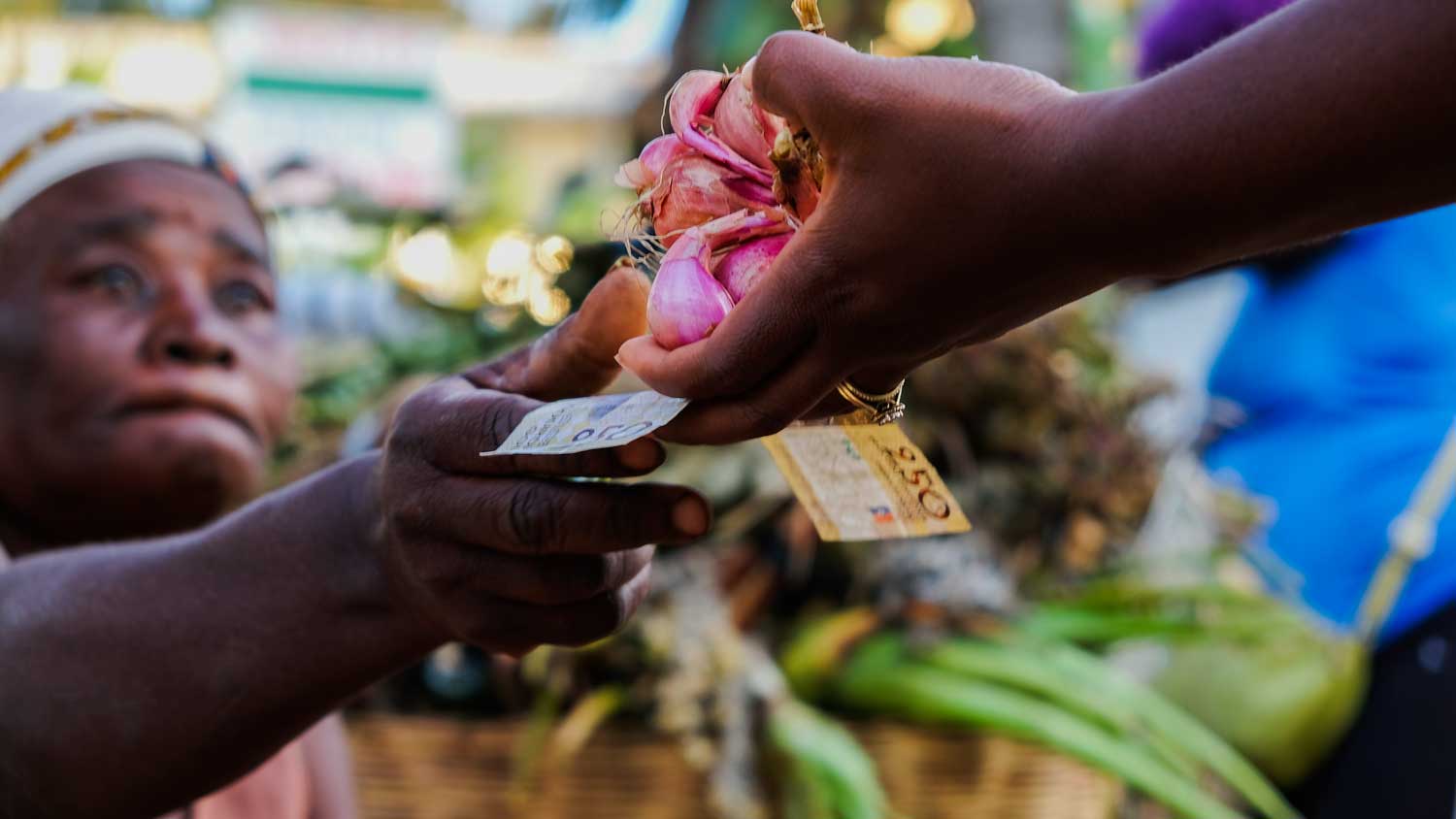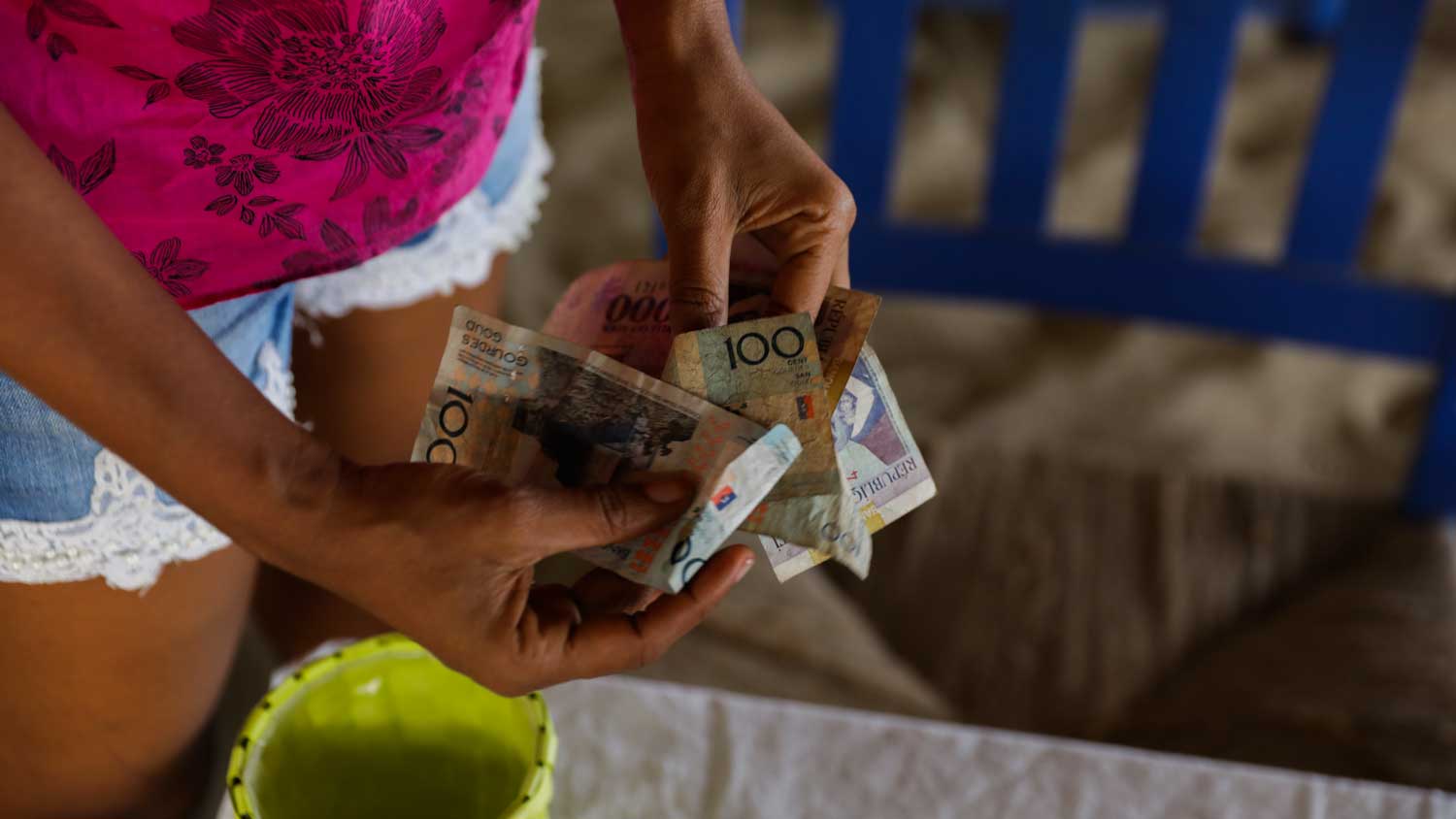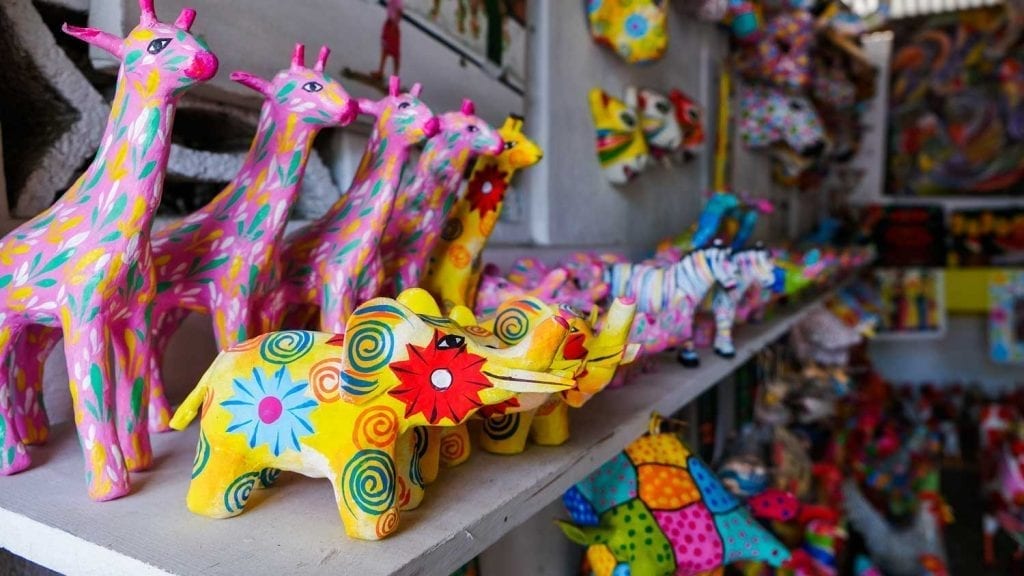
Photo: Mikkel Ulriksen
Money & Costs in Haiti
Where can you change money in Haiti? How much is a bottle of beer, a burger or a bus trip? Find out here!
You’re standing at the carousel in the Toussaint Louverture International Airport, and your thrilling getaway in Haiti is finally about to kick off. There’s a lot to think about: did you confirm your ride to your hotel? Which restaurant did you decide on? Does that sad handle going around the carousel by itself belong on your luggage?
If you read our guide to getting to Haiti, you knew to bring USD$10 to pay the tourist fee due when you land. Nice work!
Before you head out to explore the festive heart of the Caribbean, make sure to get some cash in hand. Managing currency in Haiti can be tricky, but don’t worry—we’ve got you covered. From understanding the Haitian gourde to finding the best exchange rates, we’ll help you navigate money matters like a pro.
Haitian Currency: What You Need to Know
Haiti’s official currency is the Haitian gourde (HTG), often abbreviated as HTG or GDES. Both terms refer to the same currency, and since March 2018, the Central Bank of Haiti has required all businesses to display prices in HTG. This regulation ensures clarity for locals and travelers alike and reflects efforts to stabilize the local economy.
While HTG is the standard, U.S. dollars are still widely accepted, particularly in areas frequented by tourists, like Cap-Haïtien and Jacmel. Carrying smaller denominations, such as $1, $5, or $10 bills, is especially handy for tipping, transportation, or smaller transactions. Just remember that using HTG often gets you better value, as vendors may apply less favorable exchange rates for USD.
The currency itself is a colorful introduction to Haiti’s culture. Haitian bills range from 10 HTG to 1,000 HTG and feature notable figures and landmarks. Coins exist but are rarely used in daily transactions, making bills your go-to for most purchases. If you’re new to the gourde, familiarizing yourself with its denominations can make your transactions smoother and more enjoyable.

Photo: Franck Fontain
Bills, Bills, Bills
In Haiti, you’ll encounter a mix of coins and bills, each with its own design that reflects the nation’s rich history and culture. Here’s what you need to know about the currency currently in circulation:
Coins
- 1 HTG – The smaller of the two coins, though it’s not commonly used.
- 5 HTG – The larger and more frequently encountered coin.
The bills are:
- 10 HTG – The smallest bill, light grayish-purple in color, featuring Fort Cap Rouge (Fort Ogé) on its design.
- 25 HTG – A “vintage” design that hasn’t been updated, making it unique among Haitian bills.
- 50 HTG – Pink, featuring François Capois, a hero of Haitian independence.
- 100 HTG – Blue, showcasing Henri Christophe on one side and the iconic Citadelle Henri on the other.
- 250 HTG – Yellow and brown, highlighting Jean-Jacques Dessalines and Fort Décidé.
- 500 HTG – Haiti’s only green bill, featuring Alexandre Pétion and Fort Jacques.
- 1,000 HTG – The most colorful bill, with President Florvil Hyppolite on one side and Marché Vallière on the other.
The confusing “Haitian Dollar”
While shopping at markets or negotiating prices, you may hear references to “Haitian dollars” or simply “dollars.” Don’t be confused—this usually doesn’t mean U.S. dollars.
In Haiti, one Haitian dollar equals 5 Haitian gourdes. Here’s how it works:
- 20 Haitian dollars for a pile of oranges equals 100 HTG.
- 50 Haitian dollars for a motorcycle ride in Pétion-Ville equals 250 HTG.
For clarity, always confirm whether prices are in Haitian gourdes or Haitian dollars when negotiating or making purchases.

Photo: Mikkel Ulriksen
Changing Money
The most reliable place to exchange U.S. dollars or other currencies into Haitian gourdes is at a bank, where you’ll find stable exchange rates and a secure environment. Banks generally offer the best rates, but they may have limited hours or require some patience due to wait times.
If you’re in a pinch, supermarkets are a convenient alternative. Many will gladly exchange U.S. dollars, but keep in mind that their rates are often slightly higher than those at banks. While this option is quick and easy, it’s best used for smaller amounts.
Using ATMs and Credit Cards in Haiti
Credit cards are your best friend for avoiding the hassles of currency exchange in Haiti. They’re widely accepted at hotels, major restaurants, and supermarkets, making them a convenient alternative to cash. By using your card, you’ll carry less cash and often get a better exchange rate. However, keep an eye out for places that offer dual-currency billing, as their exchange rates may be higher than the official market rate.
ATMs, on the other hand, can be less reliable. You won’t be able to withdraw foreign currencies, and some machines may run out of cash. For a safer experience, stick to ATMs in secure locations, such as your hotel or larger supermarkets, to avoid unnecessary risks.
So How Much Does Things Cost in Haiti?
Here’s the thing about shopping – for anything – in Haiti: there aren’t really any prices set in stone. The items that do have a set price are either extremely affordable, or ridiculously expensive.
Food and Drinks
- In supermarkets, prices for basics like a 2-liter bottle of Coca-Cola usually vary by only 15–25 HTG between stores.
- At farmers’ markets, you’ll find more consistent pricing. For example, a large mamit of dry white rice (measured using a repurposed tomato paste tin) is typically priced the same across vendors.
Dining Out
If you’re eating at restaurants:
- A soda costs about 70 HTG.
- A coffee will set you back 660 HTG.
- 1,500 HTG for a meal at a mid-range restaurant.
Transportation
Transportation costs in Haiti depend heavily on your destination and fluctuating gas prices. A sudden increase in fuel costs can significantly impact fares. To avoid surprises and ensure you have enough small bills for change, it’s always a good idea to ask a local about current rates.
For a deeper dive into navigating Haiti’s public transportation system, including tap-taps, moto-taxis, and buses, check out our guide: Getting Around Haiti.
Shopping for Arts and Crafts
Haggling is part of the experience when buying arts and crafts from street vendors. In tourist areas like Pétion-Ville’s Place Saint-Pierre or Cap-Haïtien, you’ll find colorful walls of paintings and handmade items. Artists are generally fair and willing to negotiate, but it’s always helpful to have a local guide who knows the typical prices.
Pro Tip for Navigating Costs
- Local Insight is Key: Whether shopping, haggling, or taking public transport, a local companion can provide invaluable advice on fair pricing.
- Be Prepared: Carry small bills and coins to make transactions smoother and avoid overpaying.
With these tips, you’ll be ready to explore Haiti, enjoy its beauty, and make the most of your budget—ensuring you get the best value for your gourde!

Photo: Franck Fontain
Top things to see in Haiti

Paradise for your inbox
Your monthly ticket to Haiti awaits! Get first-hand travel tips, the latest news, and inspiring stories delivered straight to your inbox—no spam, just paradise.




